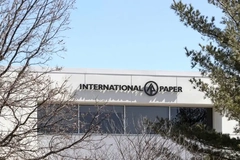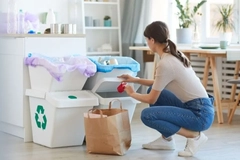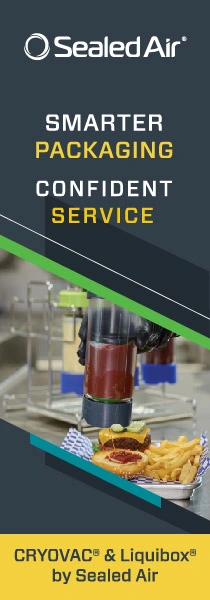Filling and sealing: Industry drives automation, hygiene and sustainability innovations
As the demands for filling technology systems advance, packaging manufacturers, particularly in F&B and pharmaceuticals, innovate for greater precision, hygiene, and operational flexibility. Such advancements are increasingly driven by industry pressure to enhance safety and sustainability.
We speak to Elopak, Syntegon, and JBT Marel about the technologies driving filling innovation as consumer preferences and material science evolve.
Uwe Schulze, executive vice president for product and development at Elopak, tells Packaging Insights: “Elopak’s main goal in updating our filling machines is to provide our customers with a more sustainable packaging solution. Reducing food waste and minimizing power and water consumption during the filling process complements the low-carbon, naturally renewable cartons that we manufacture.”
“Our main development priority in the short term is increasing operational efficiency, for instance by integrating automatic loading solutions for blank (unfilled) cartons. In the medium term, we want to improve the sustainability of our machines by decreasing the amount of electricity, water, and clean-in-place (CIP) chemicals required to run.”
Innovations to tackle challenges
With increasing demand for flexibility, regulatory compliance, automation, and product safety, Syntegon has placed innovation at the core of pharmaceutical processing and packaging.
 SynTiso addresses the current challenges regarding high performance and availability as well as maximum product yield and minimal operator intervention (Image credit: Syntegon).Markus Heinz, global product manager at Syntegon, says: “We are working on new developments in pharmaceutical filling to answer the challenges our customers are facing — often before they arise. Among the main current challenges and trends is the need for the highest flexibility in terms of speed, batch sizes, products, and packaging solutions.”
SynTiso addresses the current challenges regarding high performance and availability as well as maximum product yield and minimal operator intervention (Image credit: Syntegon).Markus Heinz, global product manager at Syntegon, says: “We are working on new developments in pharmaceutical filling to answer the challenges our customers are facing — often before they arise. Among the main current challenges and trends is the need for the highest flexibility in terms of speed, batch sizes, products, and packaging solutions.”
“For example, the market for ready-to-use (RTU) containers has been growing rapidly for years. Pharmaceutical manufacturing companies benefit from simpler processing procedures, reduced total cost of ownership, and greater flexibility. All our new developments are designed to handle RTU containers.”
Heinz notes that regulatory compliance is another major challenge in pharmaceutical fill-finish operations.
“The revised EU GMP Annex 1 requires the strict separation of the aseptic process area from the operator environment. This has triggered the demand for new, Annex 1-compliant machines and barrier technology upgrades. Syntegon offers both options and analyzes customer requirements in detail to recommend solutions.”
“Automation is one of the most important prerequisites for flexible filling operations and regulatory compliance. It helps reduce equipment footprints, increase product yields, and most importantly, minimize contamination risks. By using automation and robotics, human intervention in barrier systems can be reduced to an absolute minimum or even eliminated,” he tells us.
Product safety and data transparency
Heinz says Syntegon’s filling lines deliver high product safety by reducing manual operator intervention.
“Our lines can be equipped with numerous in-line inspection systems, as well as fully in-process control, making sure that the right amount of high-value medicine is filled and not a single drop is lost during the fill-finish process.”
The company’s end-of-line inspection solutions, such as visual inspection and leak detection, are said to ensure that products and containers reach the patients safely.
“Moreover, digital solutions such as Synexio help pharmaceutical manufacturers collect, evaluate, and visualize production and equipment data. The cloud-based software solution provides data-driven insights that enhance transparency, identify areas for improvement, and support decision-making to increase productivity,” says Heinz. The production of safe infant formula is critical, and companies aim to exceed market expectations in the development of technology.
The production of safe infant formula is critical, and companies aim to exceed market expectations in the development of technology.
Infant formula game-changing tech
Infant formula production requires enhanced standards when it comes to safety, hygiene, and contamination control.
Recognizing the critical importance of product integrity in early-life nutrition, JBT Marel’s SeamTec 2 Evolute for powder products improves in hygienic design and cleanability, ergonomics, and machine simplicity while retaining the core features for powder, such as spill reduction, packaging size flexibility, and explosion-proof technology.
JBT Marel highlights that open design is simpler to clean and reduces lubricant required for operations and “guarantees no airborne oil particles, making the equipment more hygienic and further reducing contamination risks during production.”
Amedeo Scapin, global director product lines, diversified food and health at JBT Marel, shares: “The technology will be a game changer in this market segment for infant formula. Our company is known to be a reliable single point of contact for integrated and complex production lines, and with this latest development, SeamTec 2 Evolute, we master the core technology for an efficient and performing production line.”
Automation facilitates sanitation
As awareness grows around contamination, shelf life stability, and product integrity around more F&B products, manufacturers are being held to higher expectations for hygienic design, aseptic processing, and traceability.
“Elopak’s filling machines are engineered to maintain hygiene and performance, even during frequent product changeovers, such as between fresh juice with pulp and extended shelf life (ESL) dairy. Our latest generation of machines has set a new standard for ESL dairy, extending shelf life to more than 60 days,” says Schulze.
“The integration of a High-Efficiency Particulate Air (HEPA) management system ensures clean airflow above open cartons, while dual-step heating and sealing technology guarantees robust seal integrity across diverse product types. Self-cleaning features, including automated sterilization of critical components, enable rapid and thorough sanitation between runs.”
“Additionally, level-controlled filling tanks and smart flow management minimize cross-contamination and product waste, ensuring consistent quality and operational efficiency. These innovations, combined with hands-free cleaning and predictive maintenance support, make Elopak’s systems ideal for dynamic, multiproduct environments.”
 From a sustainability and operations standpoint, more filling machines are designed to reduce environmental impact.Efficiency meets environmental responsibility
From a sustainability and operations standpoint, more filling machines are designed to reduce environmental impact.Efficiency meets environmental responsibility
To maintain regulatory compliance and production efficiency, Syntegon offers its customers solutions from a single source, including fully compatible interfaces on the technical side and one point of contact for the entire line on the project management side.
“Syntegon underlined this approach by acquiring Telstar in 2024 to complete our vial filling portfolio with freeze-dryers, including new loading and unloading systems, environmentally friendly refrigerants, and comprehensive services. Customers receive seamless solutions for their lyophilized pharmaceuticals from a single source,” says Heinz.
Meanwhile, Elopak designs its filling machines to reduce environmental impact while strengthening production efficiency.
“In real-world settings, machines like the S-PSF140UCe for chilled products and E-PS120A for ambient goods excel in terms of low waste rate over long production times and during the product changeovers, while saving resources during the efficient, fully automated cleaning and sterilization processes,” explains Schulze.
“Operational efficiency is further enhanced through smart maintenance protocols, machine connectivity, and retrofitting services that reduce downtime and energy consumption. These innovations contribute to Elopak’s broader sustainability goals, which include reducing Scope 3 emissions 25% by 2030 and reaching net zero emissions by 2050. Meanwhile, our ambient portfolio is able to run for 100 operating hours between cleaning cycles. It also accommodates a much broader range of products, including dairy, plant-based beverages, and both high and low viscosity juices.”
Designing for tomorrow
Elopak has equipped its machines with level controllers that halt carton intake at low product levels.
“This ensures that the remaining product is drained and not mixed with the next batch. Recent optimizations have reduced waste from 35 liters to just ten liters per lane,” says Schulze.
“We recently launched a new generation of filling equipment for chilled ESL products. This new system contains a fully automatic cleaning and sterilization system that is fully traceable and can also manage both high- and low-viscosity products without manual adjustments.”
According to Elopak, its machines are built to process the full portfolio of today’s materials and are prepared for future innovations.
“This includes the implementation of novel technologies for carton forming and sealing. Regardless of barrier type, board composition, or other material characteristics, our machines can adapt and change to meet any customer’s needs,” Schulze concludes.











